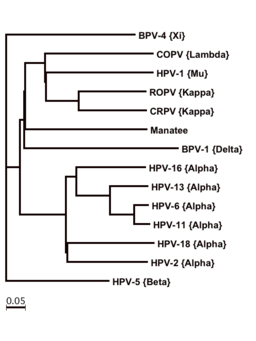Human Papillomaviruses (HPVs) are a broad category of diseases which comprise more than 200 related viruses. Papillomaviruses are small, double-stranded DNA viruses.
More than 40 of these can be easily transmitted through sexual interaction, from the skin or mucous membranes of other infected individuals. HPVs are also disseminated by vaginal, anal and oral sexual activity. In accordance with research conducted by the Centers for Disease Control (CDC), HPV is the most frequent sexually transmitted disease that affects both genders. In fact, the prevalence is so high that between 80% to 90% of men and women who are sexually active will contract the infection at one point or another in their lifetime.
Moreover, nearly 79 million Americans are infected with HPV currently. In addition, about 14 million individuals are newly affected on an annual basis. These statistics underline the assessment made by CDC that HPV is insanely common. Other key points regarding human papillomavirus are that it can even result in genital warts and induce several types of cancers. It may also be spread during birth in some cases which then causes genital or respiratory system issues. Also, there is no discernible cure for HPV yet although effective vaccinations are recommended for adolescent children.
Causes
Human papillomavirus typically enters the body through a break or fissure in the skin.
Once it permeates the skin, the agent travels to the cells of the multiple layers of the skin, which are infected by the HPV. Once this is achieved, the virus is able to replicate and multiply inside the body.
Conventionally, the time taken between first contracting HPV and the emergence of lesions can be anywhere between months and even years in some cases. There is also a contingent of affected individuals who are completely unaware that they are suffering from HPV.
Like we mentioned before, HPV may be transmitted when a person comes in contact with another’s skin. This can incite issues such as skin warts i.e. plantar or common warts that may be acquired through a cut for instance. HPV can also cause warts of the genital variety, which can be quite contagious and are mostly contracted through sexual interaction with an infected person. Activities which may result in HPV may simply include kissing or making contact with private parts such as the scrotum, vagina, vulva or anus. Intercourse is obviously part of this as well.
Additionally, there are risk factors that pertain to HPV. For instance, age is one such determinant. Children and teenagers are generally at the greatest risk of contracting the disease. The number of sexual partners an individual has over a period of time is also an important variable. The higher the number, the greater the risk attached of developing genital HPV. Lastly, the immune system plays an important role as well. People who have an immune system that is compromised by factors like HIV/AIDS, organ transplant or simply consuming medication that affects it adversely, are at great risk also.
Symptoms
The Centers for Disease Control (CDC) has stated that warts associated with most HPV infections subside without any signs or symptoms whatsoever. However, the virus is still present in the infected person’s body. This is why there are cases where they may engage in a sexual encounter with another individual and pass on the HPV to that person unknowingly.
In cases where the virus does not automatically abate, it can create considerable health complications. Examples include genital and throat warts. The latter is also known as recurrent respiratory papillomatosis. HPV is also identified as the reason for cervical cancer and other cancers found in the genitals, head and neck region.
Furthermore, the types of HPV that cause warts are different from those which create cancerous cells. Therefore, having genital warts borne by HPV does not mean that the person will also develop cancer. However, cancers which are incited by HPV may show no symptoms until the cancer has reached an advanced stage unfortunately. Regular screenings can help in the diagnosis of HPV related health issues.
This is precisely why regular consultations and checkups with doctors are imperative. In several cases, cervical cancer may be prevented by observing an abnormality in the characteristics of cells that if left untreated, can gradually develop into cancer.
A pap test may be undertaken since it can detect abnormal cells if they are located in the individual’s cervix. Although it does not directly a test for cancer or HPV, the test is able to discern an anomaly in cell alterations that are typically caused by HPV.
There isn’t a test for high risk HPV however, especially that which may affect the vulva, penis, anus or throat. Also, the HPV itself does not manifest any symptoms until and unless it has already developed into a cancer.
Treatment
As it stands, there is no medical treatment for constant HPV infections that are not linked to irregular cell changes. However, genital warts, benign respiratory tract tumors and precancerous changes inside the cervix can be treated. Adequate methods include cryosurgery, which is executed by freezing which obliterates the tissues.
Also, a loop electrosurgical excision procedure or LEEP, which is the removal of cervical tissue with the use of a hot wire loop is another measure. So is surgical conization, which is done with a scalpel, a laser or in some cases, both in order to remove a cone shaped piece of tissue from the cervical canal. Another measure is called vaporization conization and uses a laser to destroy the cervical tissue.
Additionally, treatments for other benign respiratory tract tumors include topical chemicals and surgeries such as excisional, cryo, electro and laser. Other treatments are being put through the rigors of clinical trials and tests. These include a randomized controlled trial that can determine whether treatment of anal precancerous lesions can reduce the risk of anal cancer in those people who are HIV positive.


